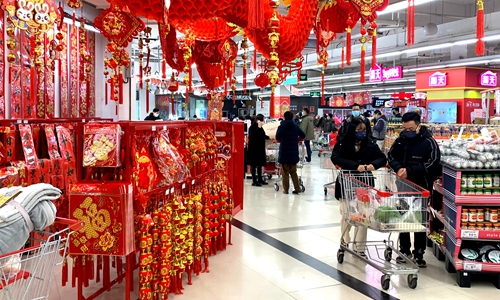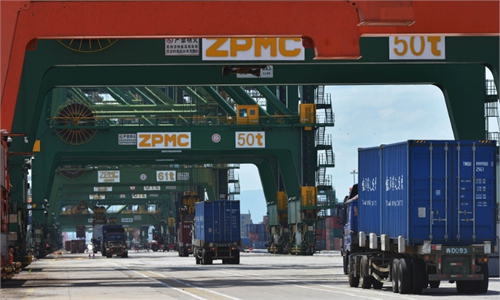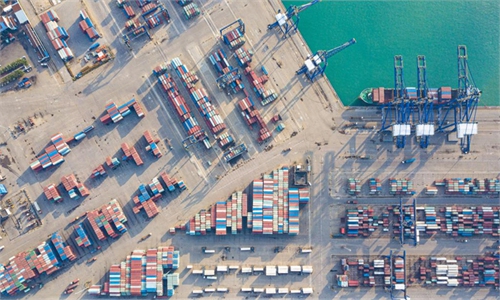
People shop in a local supermarket in Fuzhou, East China's Fujian Province. Photo: cnsphoto
It has been widely anticipated and attracted worldwide attention as to how China's consumption will perform during the first Spring Festival holidays after the optimization of COVID-19 response.
Since the optimization of anti-epidemic measures, international agencies and financial institutions have unanimously expressed optimism about the prospects of China's economic recovery in 2023. Observers generally believe consumption will be the main impetus for China's economic revitalization in 2023. Since the Chinese Lunar New Year is the most important traditional festival in the country that is usually the period coinciding with the biggest consumption bonanza, the upcoming Spring Festival consumption may offer an important window into China's consumption potential and economic vitality.
Indeed, a range of data could already be seen as a prelude to the upcoming spending spree across the country. China's 40-day Spring Festival travel rush, the world's largest human migration, is expected to see about 2.09 billion passenger trips made this year, up 99.5 percent from 2022 level. The travel rush usually leads to a consumption boom in many sectors, including tourism, dining, retailing and other leisure activities.
Data from online travel agencies showed that long-distance travel orders during the Spring Festival holidays accounted for 70 percent of the holiday season's total travel orders of companies, up 72 percent year-on-year. The box office during the seven-day 2023 Chinese Lunar New Year holidays is estimated to reach 6.5 billion yuan ($970 million), up 7.8 percent from the 2022 level. Also, since the end of December, searches for nianhuo, or goods for Spring Festival, skyrocketed 226 percent year-on-year, according to data from online shopping platforms.
Therefore, there is every reason to believe that the Chinese New Year will serve as a good start for consumption to inject renewed impetus into the national economy in 2023.
Indeed, there has been growing emphasis on the importance of expanding domestic demand, especially after the sluggish demand both at home and abroad under the impact of the epidemic has become a major obstacle for China's economic recovery. This is also why China has recently upgraded expanding domestic demand to the level of strategic planning. In mid-December, the State Council, China's cabinet, released the Strategic Guideline for Expanding Domestic Demand (2022-35), a plan aimed at further expanding domestic demand with the goal to raise the scale of consumption and investment to a new level by 2035. Moreover, the Central Economic Work Conference held last month also stressed the need to boost internal demand.
The continuous expansion of China's consumer market is important not only for the Chinese economy, but also for the global economic recovery.
At present, the outlook for the world economy is clouded with multiple negative factors such as the COVID-19 epidemic, geopolitical conflict, and high inflation, among others, with particularly bleak prospects in the US and Europe. Nearly two-thirds of leading world economists said that a global recession is likely this year, with near unanimity that there will be weak economic growth in the US and Europe, according the World Economic Forum's Chief Economists Outlook.
With the global demand being hit, China may be one of the few countries that can offer support to the world economic growth in 2023. China provides a huge market for global consumer goods, while Chinese tourists play an important role in boosting overseas travel markets, especially in neighboring countries like Thailand, Myanmar, and Laos where tourism is a pillar industry in their economies.
More importantly, as Chinese consumption recovers, domestic supply may not be sufficient to fully meet the demand for domestic consumption upgrades in some aspects, which will also offer a boost to China's imports. And an increase in imports could further strengthen China's position in the Asia-Pacific and world economy, especially in terms of the supply chain and industrial chain.



